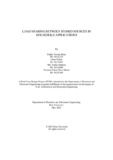| dc.contributor.advisor | Mohsin, Abu S.M. | |
| dc.contributor.advisor | Sakib, Taiyeb Hasan | |
| dc.contributor.author | Khan, Fahim Tawfiq | |
| dc.contributor.author | Fahim, Omar | |
| dc.contributor.author | Rahman, Md. Arafat | |
| dc.contributor.author | Meem, Nazmun Nahar Khan | |
| dc.date.accessioned | 2023-12-13T06:10:05Z | |
| dc.date.available | 2023-12-13T06:10:05Z | |
| dc.date.copyright | 2023 | |
| dc.date.issued | 2023-05 | |
| dc.identifier.other | ID 19121119 | |
| dc.identifier.other | ID 19121095 | |
| dc.identifier.other | ID 19121090 | |
| dc.identifier.other | ID 19121109 | |
| dc.identifier.uri | http://hdl.handle.net/10361/21976 | |
| dc.description | This final year design project is submitted in partial fulfillment of the requirements for the degree of Bachelor of Science in Electrical and Electronic Engineering, 2023. | en_US |
| dc.description | Cataloged from PDF version of final year design project. | |
| dc.description | Includes bibliographical references (pages 95-97). | |
| dc.description.abstract | The increasing demand of renewable energy in our day-to-day life leads us to contemplate
methods of incorporating renewable sources with conventional grid as several hybrid systems can be designed to meet the power demand of household loads. A typical hybrid system can be a combination of renewable sources only or it can be a combination of both renewable and conventional power system. Since, two or more sources are combinely working hence loads are shared between the loads. To facilitate the load sharing scheme, a switching mechanism is required that will control the sources and the loads as well.
In our project, we have designed a system that works to ensure dynamic load sharing for a 1200 square feet apartment utilizing grid and solar energy controlled by an automated transfer switch (ATS)) based on the availability of sources, loads demand, and the battery state of charge (SOC) so that we can reduce dependency on fossil fuel, lower electricity bill and guarantee uninterrupted supply of power for our homes. The household loads will be shared by both solar and grid power depending upon the load demand and the availability of these sources. | en_US |
| dc.description.statementofresponsibility | Fahim Tawfiq Khan | |
| dc.description.statementofresponsibility | Omar Fahim | |
| dc.description.statementofresponsibility | Md. Arafat Rahman | |
| dc.description.statementofresponsibility | Nazmun Nahar Khan Meem | |
| dc.format.extent | 109 pages | |
| dc.language.iso | en | en_US |
| dc.publisher | Brac University | en_US |
| dc.rights | Brac University project reports are protected by copyright. They may be viewed from this source for any purpose, but reproduction or distribution in any format is prohibited without written permission. | |
| dc.subject | Load sharing | en_US |
| dc.subject | ATS | en_US |
| dc.subject | Hybrid source | en_US |
| dc.subject.lcsh | Hybridization techniques | |
| dc.title | Load sharing between hybrid sources in household applications | en_US |
| dc.type | Project report | en_US |
| dc.contributor.department | Department of Electrical and Electronic Engineering, Brac University | |
| dc.description.degree | B. Electrical and Electronic Engineering | |

